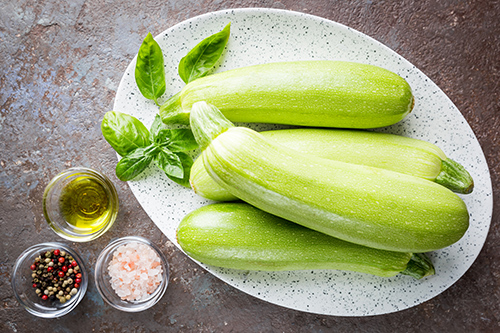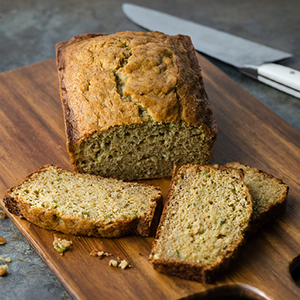Contents
The health benefits of zucchini are like those of cucumbers, although botanically, zucchini is much closer to squash. All zucchini varieties have a white or yellowish pulp identical to cucumbers but with a more solid consistency. Its delicate flavor (reminiscent of walnuts) and its dietary and therapeutic properties have given zucchini a well-deserved reputation among vegetables.

Zucchini Scientific Facts
- Scientific name: Cucurbita pepo L. var. oblonga
- Related species: Cucurbita pepo L., var. gironmontina.
- Other names: Courgette, Vegetable marrow, Golden zucchini, Italian squash.
- French: Courgette.
- Spanish: Calabacin, Zapallo.
- German: Zucchini.
- Description: Fruit of the zucchini plant, a botanical variety of squash. This is an annual herbaceous plant of the botanical family Cucurbitaceae, whose vine reaches a meter in length.
- Environment: Zucchini is cultivated in Mediterranean countries, the Netherlands, and North America.
Health Benefits of Zucchini

Although zucchini is a species of squash, it has its characteristics. For example, it has little beta-carotene, while other squashes are rich in this vital vitamin precursor. On the other hand, zucchini contains 1.16 percent protein, like other squash.
Both squash and zucchini are exceptionally low in fat, sodium, and calories, although squash is lower in the two nutrients. Because of its mucilage content, Zucchini is remarkable for its emollient or soothing properties. It is also slightly diuretic. All these properties make the health benefits of zucchini of value in the following cases:

- Dyspepsia (indigestion), gastritis, irritable bowel syndrome, colitis (colon inflammation).
- Weight-loss treatments: They provide little fat and calories but are protein-rich.
- Cardiovascular diseases, such as hypertension, coronary disease, and arteriosclerosis.
How to use and Prepare Zucchini
- COOKED in a variety of dishes. It is deliciously fried but retains a great deal of oil.
- PUREE: Finely chopped zucchini is boiled in diluted milk or soy beverage and then placed in a blender. Cornstarch may be added as a thickener.
DISCLAIMER: All content on this website is presented solely for educational and informational objectives. Do not rely on the information provided as a replacement for advice, diagnosis, or treatment from a qualified medical expert. If you are pregnant, nursing, or have any preexisting medical concerns, talk to your doctor before using any herbal or natural medicines.
REFERENCES
- George D. Pamplona-Roger, M.D. “Encyclopedia of Foods and Their Healing Power.” George D. Pamplona-Roger, M.D. Encyclopedia of Foods and Their Healing Power. Trans. Annette Melgosa. Vol. 2. Chai Wan: Editorial Safeliz, 2005. 159. Print. [health benefits of zucchini]
- Fiber and Gut Microbiota: https://www.ncbi.nlm.nih.gov/pmc/articles/PMC3705355/
- Glycemic Index and Diabetes: https://pubmed.ncbi.nlm.nih.gov/18216268/
